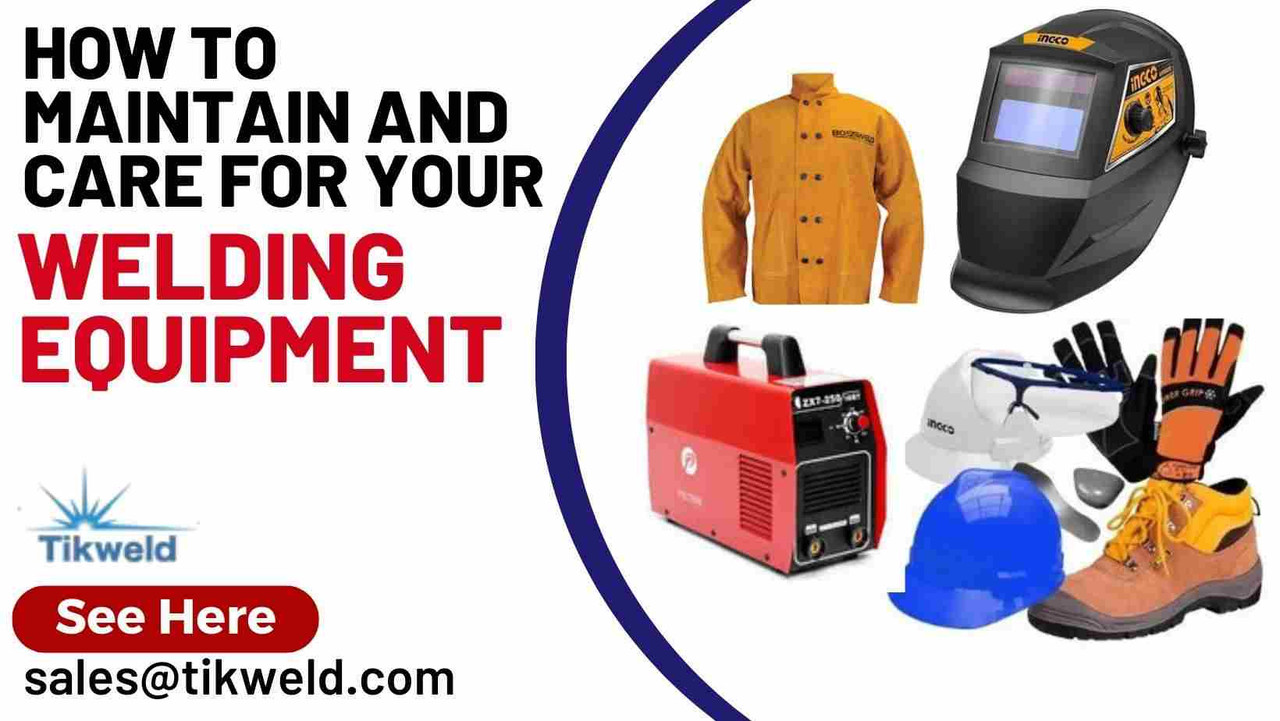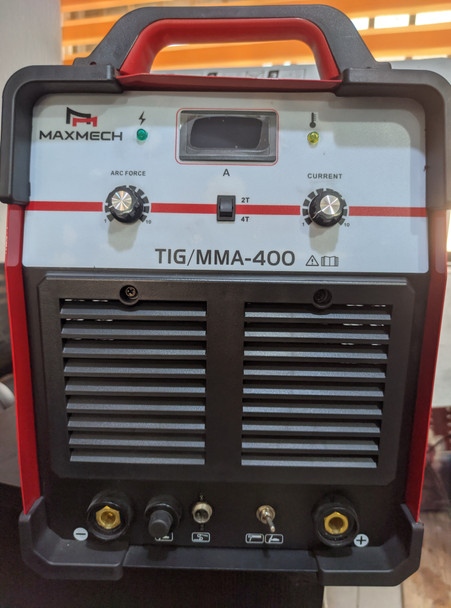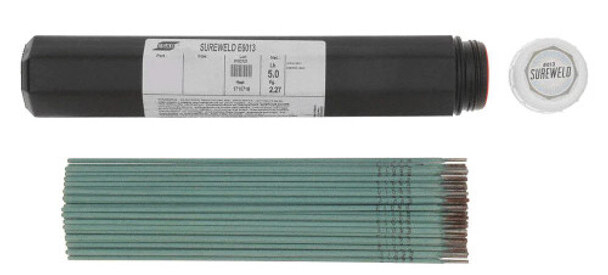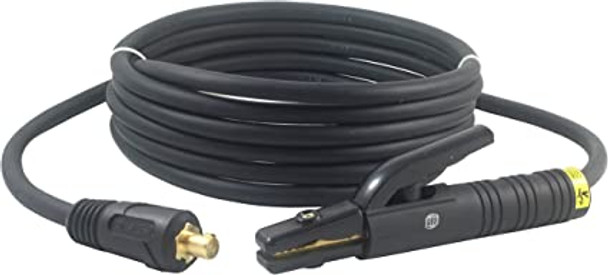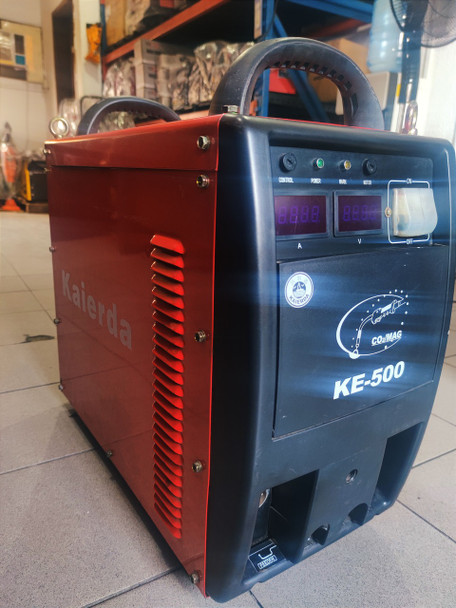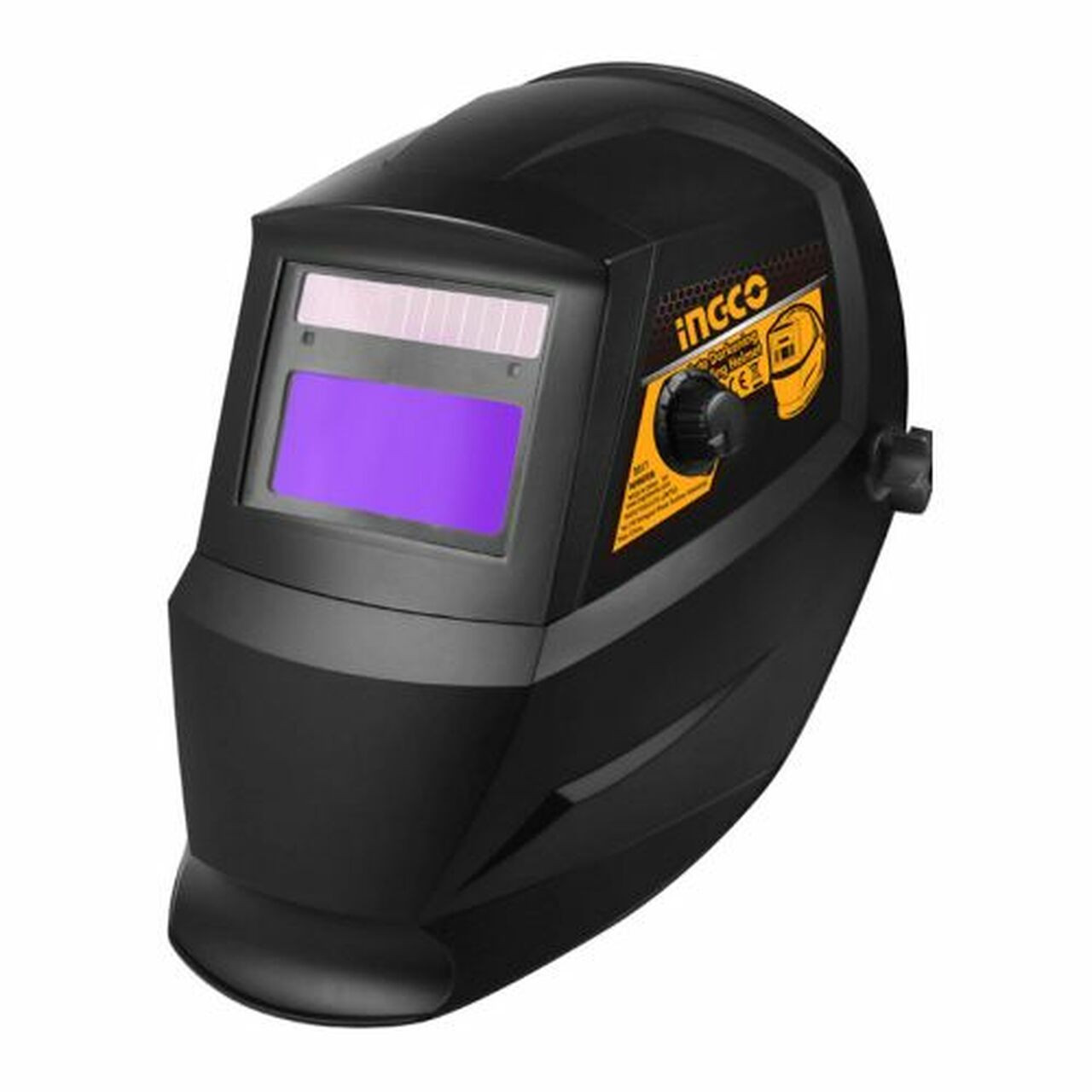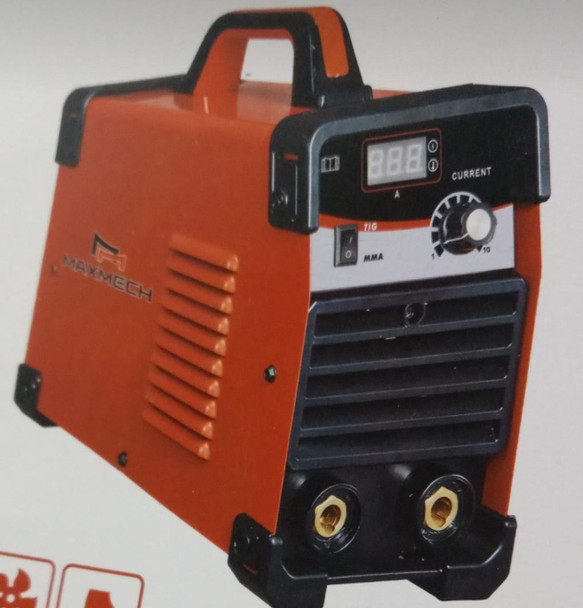How to Maintain and Care for Your Welding Equipment
Maintaining welding equipment is not just a routine task; it is a crucial aspect of ensuring the longevity and optimal performance of the tools that play a central role in metalworking and construction projects. The significance of regular maintenance extends beyond the lifespan of the equipment itself; it directly influences the safety of the welder and the efficiency of the welding projects undertaken. Safety is paramount in any welding environment. The welding process involves high temperatures, molten metal, and potentially hazardous fumes. A well-maintained welding setup contributes significantly to a safer working environment. Regular checks on equipment ensure that all safety features are functioning correctly, reducing the risk of accidents or injuries.
Maxmech Inverter Welding Machine TIG/MMA 400
Welding equipment, comprising various components and intricate systems, undergoes rigorous conditions during operation. The extreme temperatures, intense electrical currents, and exposure to different metals can lead to wear and tear over time. Without proper maintenance, this wear and tear can escalate, leading to malfunctions, reduced efficiency, and even safety hazards. Efficiency, on the other hand, is directly tied to the quality and speed of the welding work. A well-maintained welding machine operates at peak performance, producing high-quality welds with precision. In contrast, neglected equipment may lead to inconsistent welds, increased downtime, and a higher likelihood of rework. Efficiency is not only about completing tasks quickly but also about achieving optimal results with minimal waste of time and resources.
This guide will delve into various aspects of welding equipment maintenance, offering practical insights, step-by-step procedures, and expert tips. From routine cleaning practices to in-depth troubleshooting, readers will gain valuable information to keep their welding equipment in top-notch condition. Whether you're working on intricate metal art or large-scale construction projects, the principles discussed in this guide will serve as a valuable resource for ensuring the reliability and longevity of your welding equipment.
Understanding Your Welding Equipment
Welding is a process of joining metal pieces together by applying heat and pressure. To perform welding, you need various tools and equipment that are suitable for the type of welding you want to do. In this section, we will give you an overview of some common welding equipment, their key components and functions, and why it is important to know their specifications.
Overview of common welding equipment
There are many types of welding equipment available in the market, depending on the welding method, the material to be welded, and the desired outcome. Some of the most common welding equipment are:
- Gas welding equipment: Gas welding equipment heats and melts metal parts using a gas flame. The gas can be acetylene, propane, or natural gas, and it is mixed with oxygen in a torch. The torch has a nozzle that controls the flame size and shape. Gas welding equipment is used for brazing, soldering, and cutting metal.
- Arc welding equipment: This equipment uses an electric arc to create heat and melt the metal pieces. The arc is generated between an electrode and the workpiece, or between two electrodes. The electrode can be consumable or non-consumable, and it can be coated with flux to protect the weld from oxidation. Arc welding equipment is used for stick welding, MIG welding, TIG welding, and plasma arc welding.
- Resistance welding equipment: This equipment uses electric current to create heat and pressure to join metal pieces. The current is passed through the metal pieces, which have a high electrical resistance. The resistance causes the metal to heat up and fuse together. Resistance welding equipment is used for spot welding, seam welding, and projection welding.
- Laser welding equipment: For this type of equipment, a high-intensity laser beam is used to heat and melt the metal pieces. The laser beam can be focused and directed to a precise spot on the workpiece. The laser can be continuous or pulsed, and it can be delivered through a fiber optic cable or a mirror system. Laser welding equipment is used for micro welding, deep penetration welding, and hybrid welding.
Key components and their functions
Each welding equipment has its own components and functions, but some of the common ones are:
- Power source: This is the device that provides the electrical energy for the welding process. It can be a transformer, an alternator, a generator, or an inverter.
- Welding machine: This is the device that controls the welding parameters, such as the current, voltage, speed, and duration of the welding process. It can be manual, semi-automatic, or fully automatic.
- Welding torch or gun: This is the device that delivers the heat source to the workpiece. It can be a gas torch, an arc electrode, a resistance electrode, or a laser head.
- Welding consumables: These are the materials that are used or consumed during the welding process. They can be filler metals, fluxes, shielding gases, or electrodes.
Esab Stick Welding Electrode 3/32 x 14in 5kg E6013 Sureweld series
Importance of knowing equipment specifications
Knowing the specifications of your welding equipment is important for several reasons:
- It helps you choose the right equipment for your welding project. Different welding projects require different welding methods, materials, and outcomes. By knowing the specifications of your welding equipment, you can select the one that matches your project requirements and expectations.
- It helps you optimize the welding performance and efficiency. By knowing the specifications of your welding equipment, you can adjust the welding parameters to achieve the best weld quality and productivity. You can also avoid overloading or damaging your equipment by staying within its limits and capabilities.
- It helps you comply with the welding standards and regulations. By knowing the specifications of your welding equipment, you can follow the welding procedure specifications (WPS) that are required by various national and international standards.
- Finally, knowledge of equipment specifications aids in regular maintenance. Following the manufacturer's guidelines for cleaning, lubrication, and inspection prolongs the lifespan of your welding tools.
Regular Cleaning Practices
Welding equipment, like any other tool, requires regular cleaning to maintain its functionality and durability. Cleaning your welding equipment not only improves its appearance, but also prevents the accumulation of dirt, dust, grease, oil, spatter, slag, and other contaminants that can affect the welding performance and quality.
Impact of cleanliness on equipment longevity
Cleanliness is one of the key factors that influence the longevity of your welding equipment. Keeping your welding equipment clean can have several benefits, such as:
- Improving the electrical conductivity and efficiency of your welding machine, cables, torch, and consumables. Dirt, dust, grease, oil, and other insulating materials can reduce the current flow and increase the resistance, resulting in poor welds, overheating, and energy loss.
- Preventing corrosion and rust. Moisture, oxygen, and acidic substances can react with the metal parts of your welding equipment, causing them to deteriorate and weaken over time.
- Reducing the wear and tear. Spatter, slag, and other abrasive materials can damage the surface and the internal components of your welding equipment, affecting its functionality and durability.
- Enhancing the safety and comfort of your welding environment. Cleaning your welding equipment can eliminate the fire hazards, electrical hazards, and health hazards posed by the flammable, conductive, and toxic materials that may accumulate on your welding equipment.
- Extending the service life and warranty of your welding equipment. Cleaning your welding equipment can help you avoid costly repairs or replacements, and also comply with the manufacturer’s instructions and specifications that may be required for the warranty coverage.
Step-by-step guide for cleaning welding equipment
The frequency and method of cleaning your welding equipment may vary depending on the type, model, and usage of your welding equipment. However, a general step-by-step guide for cleaning welding equipment is as follows:
- Before cleaning, make sure to disconnect your welding equipment from the power source and the gas supply, and let it cool down completely. This will prevent the risk of electric shock, gas leakage, or burns.
- Remove any detachable parts from your welding equipment, such as the torch, the consumables, the cables, the gas hose, and the filters. This will make it easier to access and clean the different parts of your welding equipment.
- Use a soft cloth, a brush, or compressed air to wipe, scrub, or blow off the dust, dirt, grease, oil, spatter, slag, and other contaminants from the external and internal surfaces of your welding equipment. Be careful not to damage or dislodge any parts or wires while cleaning.
- Use a mild soap, a detergent, a degreaser, or a specialized cleaner to remove any stubborn stains or residues from your welding equipment.
- Use a damp cloth or a sponge to rinse off the cleaner from your welding equipment. Make sure to remove any traces of cleaner that may remain on your welding equipment. Avoid using too much water or soaking your welding equipment, as this may cause rust or short circuits.
- Use a dry cloth, a towel, or compressed air to dry your welding equipment thoroughly. Make sure there is no moisture or condensation left on your welding equipment. Moisture can cause corrosion, rust, or electrical problems.
- Use a lubricant, a polish, or a protective coating to apply a thin layer of protection on your welding equipment. This will help to prevent rust, corrosion, oxidation, and wear on your welding equipment.
- Reattach any parts that you removed from your welding equipment, such as the torch, the consumables, the cables, the gas hose, and the filters. Make sure to secure them properly and check for any leaks or damages. Test your welding equipment before using it to ensure that it is working correctly and safely.
Esab warrior 500i Multipurpose Inverter arc welding machine
Recommended cleaning tools and materials
The cleaning tools and materials that you will need for your welding equipment may depend on the type, model, and condition of your welding equipment. However, some of the common cleaning tools and materials that you may use are:
- Soft cloth, brush, or compressed air: These are used to remove the dust, dirt, grease, oil, spatter, slag, and other loose contaminants from your welding equipment. You can use a cloth or a brush for the external surfaces, and compressed air for the internal surfaces.
- Mild soap, detergent, degreaser, or specialized cleaner: These are used to remove any stubborn stains or residues from your welding equipment.
- Lubricant, polish, or protective coating: These are used to apply a thin layer of protection on your welding equipment. You can use a lubricant for moving parts, a polish for metal parts, or a protective coating for specific parts or materials.
- Safety Gear: Gloves and safety glasses to protect yourself during the cleaning process.
Inspecting and Maintaining Welding Cables
Welding cables are the lifelines of your welding equipment, responsible for transmitting the necessary power to create the arc. Proper maintenance of these cables is crucial for the safety of the welder, the efficiency of the welding process, and the longevity of the equipment. Here's why cable maintenance is of utmost importance:
- Safety: Damaged or worn-out cables pose a significant safety risk. Regular maintenance ensures that cables are in optimal condition, reducing the chances of electrical hazards, shocks, or fires.
- Consistent Power Supply: Welding cables that are in good condition contribute to a stable and consistent power supply. This is essential for achieving quality welds and preventing interruptions during the welding process.
- Equipment Longevity: Well-maintained cables extend the lifespan of your welding equipment. Damaged cables can lead to overheating and increased stress on the welding machine, potentially resulting in costly repairs or replacements.
Inspection Routines for Welding Cables
Incorporate the following inspection routines into your regular maintenance schedule to ensure the health of your welding cables:
- Visual Inspection: Regularly inspect the entire length of the welding cables for any visible damage, such as cuts, abrasions, or exposed wires. Pay special attention to areas near connectors and joints.
- Flexibility Check: Bend and flex the cables gently along their length. Stiffness or resistance to bending could indicate internal damage or issues with the cable's flexibility.
- Connector Examination: Inspect the connectors for signs of wear, corrosion, or loose connections. Ensure that they fit securely into the welding machine and electrode holder or torch.
- Check for Heat Damage: Examine the cables for any signs of heat damage, such as discoloration or melted insulation. Heat-damaged cables are prone to failure and should be replaced promptly.
- Measure Resistance: Use a multimeter to measure the resistance of the welding cables. An unexpected increase in resistance may indicate internal damage or poor conductivity.
Addressing Common Cable Issues
When dealing with welding cable issues, consider the following steps for effective resolution:
- Cut and Splice: For minor damage, such as cuts or abrasions, cut out the damaged section and splice the cables using proper connectors and insulation. Ensure that the splicing is secure and well-insulated.
- Replace Damaged Sections: If damage is extensive or located near connectors, it's advisable to replace the entire section of cable. Use cables of the same specifications and ensure proper connections.
- Tighten Connectors: Loose or corroded connectors can result in increased resistance and decreased power transmission. Regularly tighten connectors and clean them to prevent corrosion.
- Utilize Cable Covers: Consider using cable covers or protective sleeves in areas where cables are exposed to excessive wear, such as near welding tables or workstations.
Hellog Welding Electrode Holder 200 Amp Lead, Assembly - Dinse 35-70 Connector - #2 AWG cable (15 FEET)
Calibration and Alignment
Periodic calibration of your welding equipment is essential to maintain accuracy in the welding process. Calibration ensures that your machine operates according to specified parameters, resulting in consistent and high-quality welds. Here's why regular calibration is crucial:
- Precision and Accuracy: Over time, factors such as wear, environmental conditions, and usage can impact the calibration of welding equipment. Regular calibration ensures that your machine maintains precise settings, contributing to accurate welding results.
- Compliance with Standards: Calibration is often necessary to comply with industry standards and regulations. Adhering to these standards is not only a requirement for certain applications but also ensures the safety and reliability of your welds.
- Optimal Performance: Accurate calibration leads to optimal performance, minimizing the likelihood of defects, rework, or weld failures. It allows you to achieve the desired weld characteristics consistently.
Importance of Proper Alignment
Proper alignment of welding components is crucial for achieving effective and efficient welds. Misalignment can lead to issues such as uneven weld beads, poor penetration, and compromised structural integrity. Here's why maintaining proper alignment is of paramount importance:
- Quality Welds: Correct alignment ensures that the welding torch, electrode holder, and other components are in the right position, facilitating the creation of uniform and structurally sound welds.
- Reduced Wear and Tear: Misalignment can cause increased stress on components, leading to premature wear and tear. By maintaining proper alignment, you can extend the lifespan of your welding equipment.
- Minimized Rework: Poor alignment often results in suboptimal welds that may require rework. Proper alignment reduces the need for rework, saving both time and resources.
Step-by-Step Guide for Calibration and Alignment Processes
The calibration and alignment processes for welding equipment may vary depending on the type, model, and condition of the equipment, as well as the manufacturer’s instructions and the industry standards. However, a general step-by-step guide for calibration and alignment processes is as follows:
- Before calibrating or aligning the welding equipment, make sure to disconnect the equipment from the power source and the gas supply, and let it cool down completely.
- For calibration, use a calibrated instrument, such as a digital clamp meter, to measure the output of the welding equipment, such as the current, voltage, or wire feed speed. Compare the measured values with the desired values for the welding task, and adjust the settings on the equipment accordingly. Test the output on different materials, and repeat the process until the output is consistent and accurate. Record the calibration results and attach a calibration tag or sticker to the equipment, indicating the date, the calibrator, and the expiry of the calibration.
- For alignment, use a measuring tool, such as a ruler, a protractor, a gauge, or a micrometer, to check the dimensions, angles, gaps, and offsets of the workpieces. Compare the measured values with the required values for the welding task, and adjust the workpieces accordingly. Use an alignment tool, such as a clamp, a jig, or a fixture, to hold the workpieces in place and maintain the proper alignment. Test the alignment by performing a trial weld, and repeat the process until the alignment is correct and stable.
- After calibrating or aligning the welding equipment, reconnect the equipment to the power source and the gas supply, and test the equipment before using it to ensure that it is working correctly and safely. Adjust the welding parameters if necessary.
Kaierda Gas-Shielded Welding Machine CO2/MAG KE-500
Cooling System Maintenance
Welding equipment often generates significant heat during the welding process, making cooling systems a vital component to prevent overheating and ensure optimal performance. Understanding the basics of welding equipment cooling systems is crucial for effective maintenance.
Welding machines commonly use air or water cooling systems. Air cooling relies on fans to dissipate heat, while water cooling utilizes a water circulation system to cool components. The cooling system typically includes components such as fans, radiators, water pumps (for water cooling), and coolant reservoirs. These components work together to maintain the temperature of critical parts within the welding machine. Efficient cooling prevents the overheating of essential components, such as transformers and electronic circuits. Overheating can lead to equipment malfunctions, reduced performance, and even permanent damage.
Regular Checks and Maintenance for Cooling Systems
To ensure the longevity and effectiveness of your welding equipment's cooling system, incorporate the following checks and maintenance practices into your routine:
- Visual Inspection: Regularly inspect the cooling system components for any signs of damage, leaks, or corrosion. Pay attention to the condition of fan blades, radiators, and hoses.
- Clean Cooling Fins: If your welding machine has cooling fins, clean them regularly using compressed air or a soft brush. Accumulated dust and debris can hinder the dissipation of heat.
- Check Coolant Levels (for Water Cooling): For water-cooled systems, monitor coolant levels in the reservoir. Top up the coolant as needed and ensure it is of the recommended type.
- Inspect Hoses and Connections: Examine hoses and connections for any leaks or wear. Tighten loose connections and replace damaged hoses promptly to prevent coolant leakage.
- Test Fans: Ensure that cooling fans are operating smoothly. Replace any malfunctioning fans promptly to prevent overheating.
- Monitor Temperature Gauges: Many welding machines are equipped with temperature gauges. Regularly monitor these gauges during operation to ensure that the equipment is operating within the recommended temperature range.
Troubleshooting Common Cooling System Issues
Address cooling system issues promptly by following these troubleshooting steps:
- Overheating: If your welding equipment is constantly overheating, check for obstructions in the cooling fins, damaged fans, or low coolant levels (for water-cooled systems). Clean or replace components as needed.
- Coolant Leaks: Identify and repair coolant leaks promptly. Leaks can lead to a loss of cooling efficiency and potential damage to the welding machine.
- Fan Failures: Malfunctioning fans can result in inadequate cooling. Replace faulty fans and ensure that they are free from obstructions.
- Inadequate Cooling (Water-Cooled Systems): If water-cooled systems are not providing sufficient cooling, check for pump malfunctions, insufficient coolant levels, or blockages in the water circulation system.
- Unusual Noises: Unusual noises from the cooling system may indicate problems such as worn-out bearings in fans or impellers. Investigate and replace damaged components.
INGCO Auto Darkening Welding Helmet AHM008
Storage Guidelines
Proper storage is crucial to safeguard the integrity and functionality of your welding equipment during periods of inactivity. Consider the following guidelines for ensuring optimal storage conditions:
- Dry and Controlled Environment: Store welding equipment in a dry and controlled environment to prevent moisture-related issues such as corrosion. Moisture can compromise the electrical components and structural integrity of the equipment.
- Temperature Control: Avoid extreme temperature fluctuations. Welding machines and accessories are sensitive to temperature changes, and storing them in a stable environment helps prevent damage.
- Secure Location: Store welding equipment in a secure location to prevent unauthorized access and potential damage. Consider using designated storage cabinets or lockable areas for added protection.
- Protection from Dust and Debris: Cover welding machines and accessories to shield them from dust and debris. Accumulated particles can affect the performance of moving parts and electrical components.
Recommended Storage Accessories
Enhance your storage practices by using the following accessories:
- Equipment Covers: Utilize equipment covers made from durable materials to protect welding machines from dust, dirt, and potential scratches.
- Storage Cases and Cabinets: Invest in storage cases or cabinets designed specifically for welding accessories and consumables. These provide organized storage and protection from environmental elements.
- Desiccant Packs: Place desiccant packs in storage areas to absorb excess moisture and prevent corrosion. This is particularly important for sensitive electronic components.
- Cable Organizers: Keep welding cables neatly organized using cable wraps or organizers. This not only prevents tangling but also extends the lifespan of the cables.
Preventing Environmental Damage During Storage
To prevent environmental damage during storage, follow these preventive measures:
- Avoid Direct Sunlight: Store welding equipment away from direct sunlight, as prolonged exposure can lead to heat buildup and potential damage to electronic components.
- Elevate from Floor: If possible, store equipment off the floor to protect it from moisture, spills, and potential flooding. Pallets or raised platforms are effective for this purpose.
- Regular Checks: Periodically inspect stored equipment for signs of damage, corrosion, or pest infestation. Promptly address any issues to prevent further deterioration.
- Secure Gas Cylinders: If storing gas cylinders, ensure they are properly secured in an upright position. Store them away from heat sources, direct sunlight, and potential impact areas.
Maxmech Inverter Welding Machine MMA - 300
Related Articles
Welding in Harsh Environments: Tips and Best Practices
Welding Safety 101: Essential Gear Every Welder Needs
How to Set Up Your Home Workshop with the Right Welding Tools
Conclusion
Welding equipment is a valuable and versatile tool that can help you perform various welding tasks with ease and efficiency. However, welding equipment also requires regular maintenance to ensure its optimal condition and safety. By following the maintenance tips discussed in this article, you can prevent common problems, such as overheating, corrosion, contamination, or malfunction, that can affect the quality and safety of your welding process. You can also extend the service life and warranty of your welding equipment, and reduce the welding costs and waste.
We encourage you to inspect and maintain your welding equipment periodically, and follow the manufacturer’s instructions and recommendations for the type, model, and usage of your welding equipment. You should also use the appropriate tools and materials for cleaning, calibrating, aligning, and storing your welding equipment. By doing so, you can ensure the longevity and reliability of your welding equipment, and enjoy the benefits of welding for years to come.

